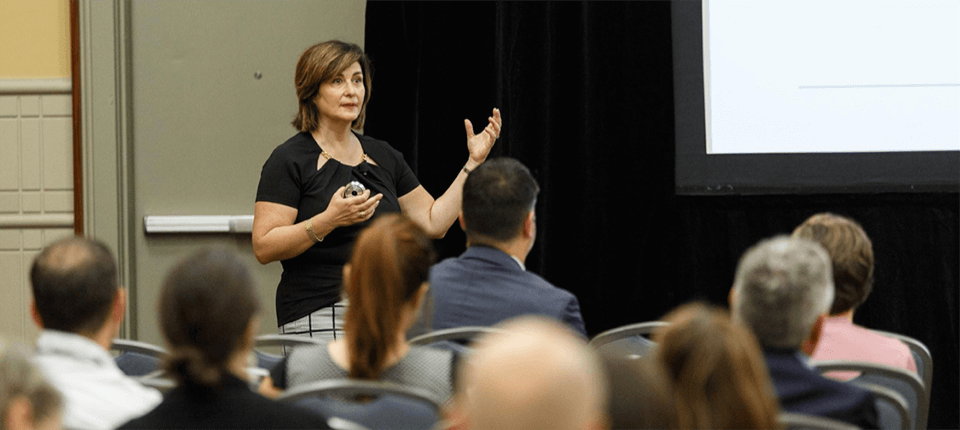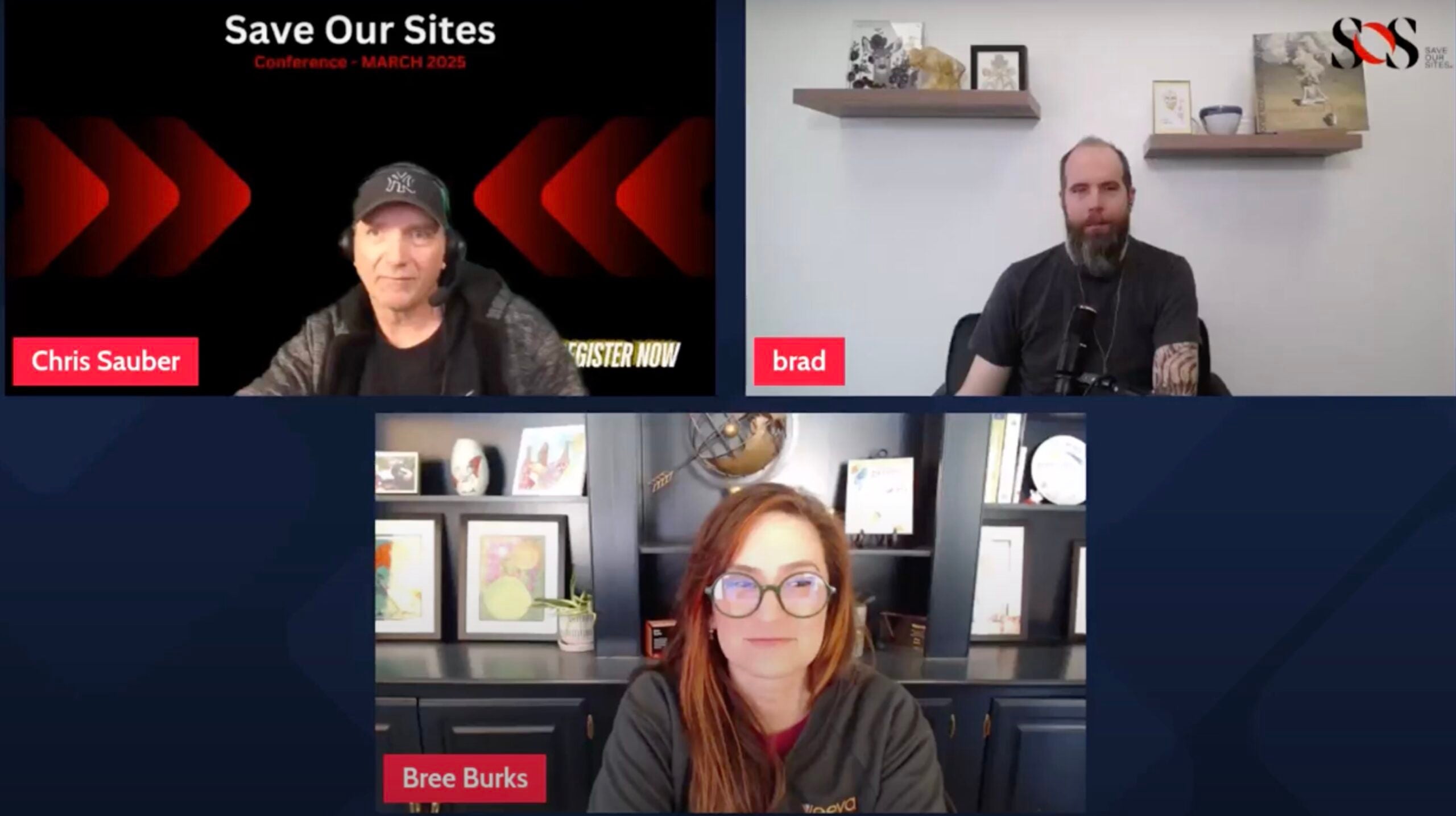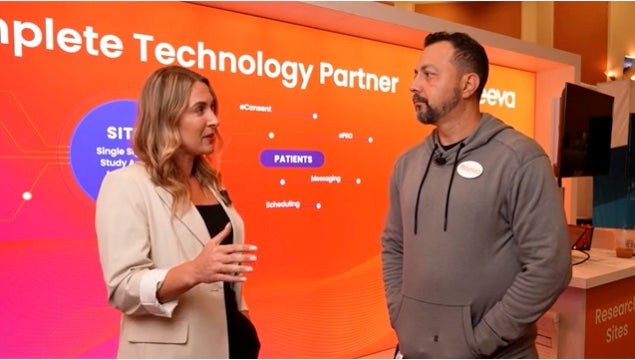University of Louisville Improves Regulatory Efficiency with Veeva SiteVault

Lale Akca, MBA, CCRA, Executive Director of the Clinical Trials Unit at the University of Louisville, presents at Veeva R&D Summit.
A growing pipeline of clinical studies is a good thing for clinical research sites. But for sites that rely on paper-based processes, portals, and shared drives to manage studies, growth can be difficult to manage.
With 150 active trials and 60 new studies in the pipeline across 30 specialties, the Clinical Trials Unit at the University of Louisville manages a complex research environment.
“We were having a lot of trouble keeping up all the new trials opening across multiple locations, all using paper processes,” said Rachel Sheppard, MBA, CCRA, CCRC, Clinical Regulatory Director at the University of Louisville.
“Each team was following a different process. Information access was a real problem due to lack of standardization.”
Rachel found that each of their 20 clinical staff were spending two to three hours a week chasing investigators for signatures – amounting to 50 hours each week.
Sponsor provided portals weren’t helping the situation. “We had no control over their systems and they take a lot of time to learn,” said Rachel. “We got to the point where couldn’t keep track of which portal went with which study.” The University of Louisville needed to get studies opened fast and efficiently – and remove any barriers to that goal.
A Band-Aid Approach
Prior to implementing a purpose-built electronic investigator site file (eISF), the University of Louisville took a ‘Band-Aid’ approach to solve their document management challenges. They modified their existing clinical trial management system (CTMS), created a folder structure on their server, stored documents on flash drives, and used DocuSign to collect signatures electronically.
“We tried for a long time, but it wasn’t successful. It didn’t solve our biggest problems of standardization and decreasing the startup timelines. Everybody went back to their old habits.” said Lale Akca, MBA, CCRA, Executive Director of the Clinical Trials Unit at the University of Louisville. “One day, we said ‘enough is enough.’ We’re gonna go with a commercial system.”
Technology Expectations and Acceptance Criteria
Before evaluating commercial eISF systems, Rachel and Lale identified their needs. Rachel shared their criteria for acceptance.
- Process Standardization: “We have to have a way to do things in a standard way to have a way of finding the documentation when we need it.” To support this, the system should enforce adherence to the university’s folder structure and document naming conventions.
- Cloud-Based: “We have people all over campus, and one of our cost savings is not to have our clinical team running around getting signatures. So we need to ensure that we have a way to access the system from anywhere.”
- Autonomy: While standardization was key, some level of autonomy was important. “If we have a new regulation or campus requirement, we have to implement changes quickly.”
- Robust Reporting: “We needed to have robust reporting capabilities and ways to actually to track progress and the effectiveness of our process through the system.”
- Ease of Use Ease: of use and finding a way to standardize without upsetting their staff was also important. “These are valuable people and we want to ensure that we’re not alienating them with any new products.”
- Efficiencies: “We need to be able to increase our efficiencies with signatures, with timelines, with finding documents that we needed.”
- Attractive to Sponsors: “It needed to be attractive to sponsors. We needed them to know that this is a high-quality system and that it’s going be easy for them to use,” said Rachel. “We considered who has the market share, name recognition, and is trusted by the industry,”
Key Decisions
Past experience with commercial systems left the University of Louisville team apprehensive. “We had some bad experiences with other vendors,” said Rachel. They needed a vendor they could trust.
After evaluating a range of vendors, they found that the Enterprise version of SiteVault met and even exceeded their core requirements.
“We found the system to be very intuitive. It had a lot of reporting capabilities and the dashboards are amazing. Beyond storage, the ability to have metadata that you can report out is phenomenal,” said Rachel.
Veeva’s product quality and reputation also stood out amongst other vendors. “I started reading about their company and reviewing their technical documentation. After each release, they publish all the changes,” said Lale. They discovered that many of their sponsors use Veeva products, so Lale and Rachel knew their sponsors would be familiar with the platform. “The reputation really attracted us a lot as well.”
Pleasant Surprises
While initially hesitant about adopting a commercial system, trust in Veeva grew quickly. “Veeva’s customer support team is extremely responsive and experienced. You always have a direct link to the person who knows the system very well. We felt supported from day one,” Lale commented.
“Veeva’s customer support team is extremely responsive and experienced. You always have a direct link to a person who knows the system very well. We felt supported from day one.”
The implementation was fast. Other systems can take six months to a year to fully implement and customize. But the University of Louisville went live with Veeva SiteVault in just eight weeks.
Rachel and Lale were surprised by the level of team buy-in. “As soon as we finished the training, people wanted to know when they could put their first study in. It was great to feel that excitement.”
Feedback from study monitors is also positive. The university’s clinical team is at one side of the campus while the regulatory team is at another. Monitors can now review the regulatory files from anywhere and spend less time traveling around.
“We have accomplished a lot in the means of standardization and process improvement,” said Lale. “If I had to describe SiteVault, it would be intuitive, top-notch, innovative, easy to use, and flexible.”
The University of Louisville is optimistic about the future. Lale concludes, “Between sponsors, CRO’s, and sites, everybody working in this market has one shared goal – to bring novel treatment options to our patients as fast as we can. We’re excited about working with sponsors to do things in a better way. We can only achieve this goal if we all work together.”
Want exclusive tips and resources?
Be the first to recive upcoming news, join our mailing list.
Subscribe



